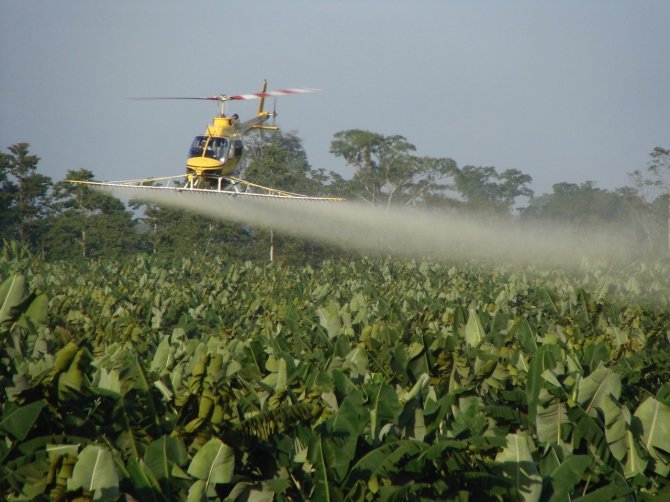
News
New study shows decreasing effectiveness of fungicides to control the devastating Black Sigatoka disease of banana
The fungus Pseudocercospora fijiensis causes black leaf streak disease or Black Sigatoka of banana, which is the most damaging leaf disease of bananas worldwide. An analysis of 592 P. fijensis isolates from seven banana-producing countries on three continents shows how P. fijensis is evolving to insensitivity to azole fungicides due to the heavy use of pesticides.
The results of the study have been published in Pest Management Science and underscore the need to stop this vicious circle by developing alternative disease control methods and new banana varieties.
Fragility
Black leaf streak disease is the most important banana disease worldwide. Cavendish bananas represent more than 50% of the global production - and dominate the export (95%) – but are very susceptible to this disease. In most countries, banana production relies on continual intensive disease control, usually at weekly intervals, throughout the year. It demonstrates the fragility of global banana production and its overall unsustainability. Azole fungicides are the cornerstone for fungal disease control in plants, animals and humans.

First comprehensive analysis of reduced sensitivity
This study is the first comprehensive analysis of reduced sensitivity to these fungicides in banana production. In their study, researchers of Wageningen University & Research (WUR) and their collaborators, analyzed 592 P. fijensis isolates from seven countries in Latin America, the Caribbean, Africa and Southeast Asia for the sensitivity to three azole fungicides.
In addition, they sequenced the target gene - Pfcyp51 - in 266 isolates, to determine every mutation and analyzed the overall genomes of 155 isolates to study geographical clustering. All identified mutations could be associated with reduced sensitivity to the fungicides. This trend results in a vicious circle of even more fungicide applications in banana cultivation. Taken together, these alarming data call for a new view on sustainable banana production. For the benefit of the manifold producers and domestic and international consumers.